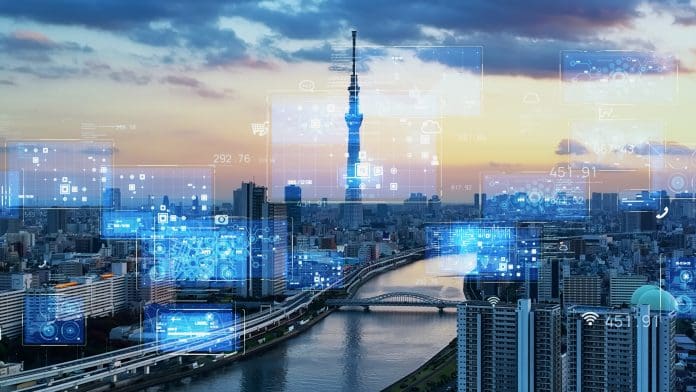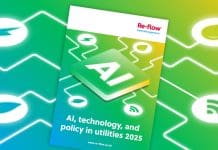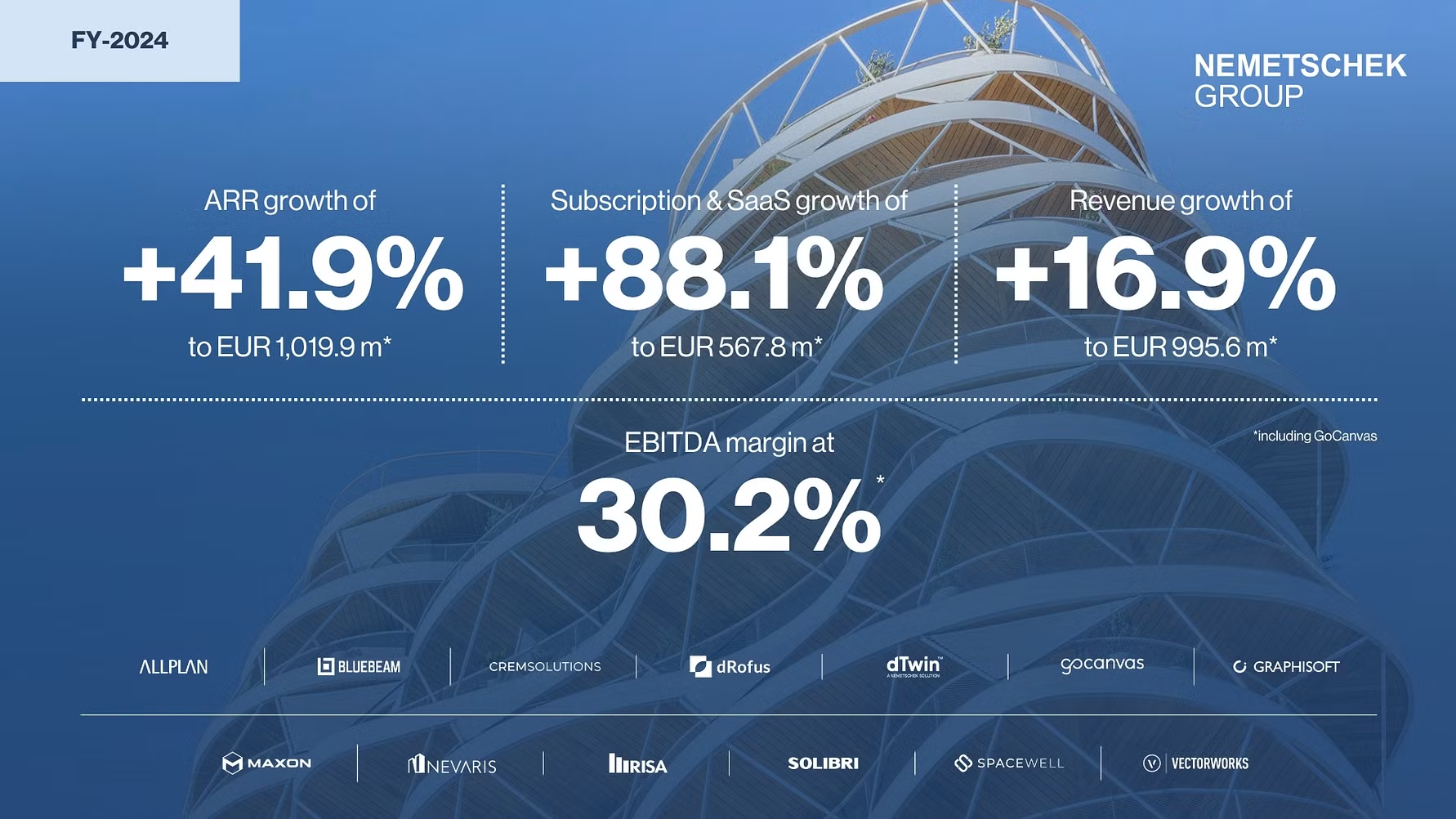AI’s use in the AEC/O industry has the potential to increase sustainability, efficiency, and decision-making, says Nemetschek Group
From ChatGPT to the realm of robotics, AI appears to be everywhere.
In the time-honoured tradition that follows the introduction of any new major technological leap – from the printing press back in the 15th century, right up to the democratisation of the internet – conversations on the topic swing from the benefits AI will deliver to concerns over the risks that it poses.
As we have also seen in the past, once the dust has settled, AI will find its niche, whether it’s noticeable at the front end or hidden away at the back end of the services and technologies that we use in the future.
There’s no doubt that bad actors will use AI to their advantage, but events like the AI Safety Summit hosted in the UK last November will unite governments and the technology industry in a joint mission to create guardrails to ensure that, where possible, AI is used to benefit society, rather than compromise it.
Opportunities for AI in the AEC/O industry
Even at this early stage of AI’s evolution, there’s no doubt that the AEC/O industry should be excited about the opportunities that AI presents.
The technology has a role to play in helping the industry cut its carbon emissions and raw material waste through the implement of better ways of designing and constructing buildings.
The good news is that AI – tailored for the construction sector – already exists, although its usage remains somewhat discreet.
While it is less tangible and visible than in architecture or interior design, AI nonetheless represents a significant innovation for the construction industry; and, as the technology evolves and finds more applications where it can add value to our profession, it will become an invaluable part of our essential toolkit.
It is important that we are receptive to AI, despite any initial reservations or concerns we may have. Solutions supplemented with AI will emerge as formidable allies in addressing the crucial challenges the industry faces.
They will be essential in redefining our standards of efficiency, especially in meeting the challenges of ecological transition, precision and profitability throughout project lifecycles.
Those are all commendable ambitions, and AI can help the industry meet them.
Planning and design: Navigating fluidly through complex data to facilitate decision-making while boosting productivity
Although the industry is still in the midst of a digital transition, data already plays an essential role. In fact, data processing – automated through AI-integrated tools – can revolutionise the planning and design phases of construction projects.
Aggregating information from multiple sources and stakeholders (architects, urban planners, project managers, etc) – which is always complex and prone to error or confusion – becomes smoother when supplemented with AI.
Furthermore, the digital model derived from Building Information Modelling (BIM) becomes more precise and detailed, reducing reliance on numerous – and sometimes very specific – third-party solutions.
AI also intervenes to provide more accuracy by analysing data history heterogeneously and in real-time, thus avoiding manual inaccuracies. As a result, AI ensures the integrity of initial design models while establishing a mechanism for continuous improvement.
Such an approach significantly reduces the costly and time-consuming risks associated with human error.
Another major asset for the sector is the contextual analysis that AI can provide professionals. It leads to the overall design of a building, considering environmental factors such as local climate models. Those insights guide professionals in making proactive decisions when anticipating future challenges.
Construction and renovation: Enhancing quality and tackling logistics
AI facilitates real-time monitoring of construction progress by measuring it against the planned schedule. This approach immediately identifies programming issues or potential delays, enabling offsite managers to make informed decisions to meet deadlines.
During renovation and modernisation processes, AI offers intelligent simulations, reducing the time and costs associated with these projects, even for older buildings.
While traditional buildings may lack complete historical data, AI has the capability to leverage 3D scanning and panoramic technologies to create new BIM models. This digitisation process modernises older structures to align with current design and sustainability standards.
Operations: Advancing data-driven management and sustainable practices through AI
AI will become an essential complement to the digital twin. It can already predict maintenance needs and automate malfunction detection through IoT sensors. This enables remote inspections and lifecycle analyses, increasing a building’s efficiency while reducing operating costs.
Perhaps more importantly, AI’s use in digital twins is pertinent in an era where sustainability is paramount, as AI algorithms can analyse real-time data from IoT sensors
to identify inefficiencies in energy use.
It can also facilitate the smart search of structured and unstructured data. Therefore, AI-enhanced digital twins can also optimise other operational aspects – like space utilisation and occupant comfort – analysing patterns and environmental variables to create an optimal work environment.
In this context, AI transforms the renovation and retrofitting process by enabling intelligent simulations that generate multiple design possibilities in seconds.
Whether the objective is sustainability or optimised lighting, AI-based models can visualise various scenarios, reducing both the time and cost associated with these projects.
The rapid advancements in AI are undeniably catalysing a transformative shift across the AEC/O industry.
When used in conjunction with digital twins, AI is a powerful tool that enhances capabilities across planning, design, construction and operations.
By way of practical example, a user can take a photo of a part of a building or an asset and search across the whole dataset for information relevant to the area they are interested in.
Building the future with AI
AI has quickly become a powerful tool enhancing planning, design, construction and operation capabilities.
It becomes the cornerstone of intelligent data-driven decision-making, which is essential for an industry aiming for innovation, sustainability and operational excellence.
With so much focus on the environment – from governments, corporates and consumers alike – and the AEC/O industry under immense pressure to address the damage it does to the environment, it’s imperative that it embraces technology like AI to become an even more responsible corporate citizen.
Maria Christine Richtsfeld
Communication specialist
Nemetschek Group
mediarelations@nemetschek.com
www.nemetschek.com
X
Linkedin
Facebook
Instagram
*Please note: This is a commercial profile.














